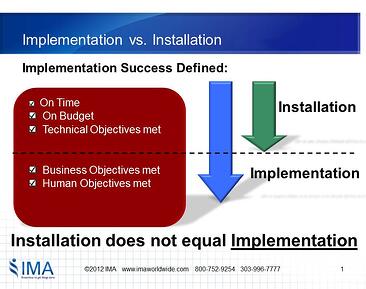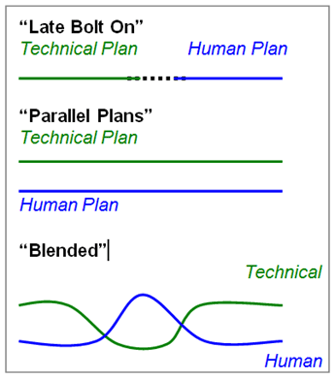In our recent blog article, “Why Do Change Projects Fail? How Can You Prevent Your Project from Becoming a Statistic?” we quoted a relatively well-repeated figure that up to 70% of all major change initiatives fail. We seem to have hit a nerve within the Change Management industry. A debate was started about the definition of failure and why, if this fact was true 20 years ago, is it still applicable today?
A debate was started about the definition of failure and why, if this fact was true 20 years ago, is it still applicable today?
The ugly truth of the matter is today’s organizations are still plagued by projects that are sub-optimized, if not facing outright failure. These are “spotty” implementations, with success in one area but not in all the areas impacted by the change. In our Change Management Consulting work, we see it all the time. Organizations get to the launch/cut-over/“go-live” date and they declare the project successful. The project team is disbanded and the budget ends.
Whether the number of those sub-optimized projects is north or south of 70% is far less important than the fact that the opportunity still exists to improve how organizations execute strategic initiatives. This is not IMA talking—it is what we hear every day from clients who are challenged with the human and cultural barriers to change on their projects.
The cause for these stalled or sub-optimized projects is often traced back to what we call an “installation mentality” that is widely prevalent. We can also call this “Pre-mature Project Completion,” because the project ends before the real goal has been achieved. Yes, the project was “installed” and installation is very important. But it’s... not enough. What’s missing? Return on Investment!
We contend that instead of considering launch or “go-live” as the strategic-end goal, organizations need to re-frame their definition of success and change their mindset to one of implementation rather than installation. Interestingly, when we introduce this concept and nomenclature to senior leaders, they get it! It’s a concept that can cause some interesting and provocative discussions in boardrooms.
For consistency and clarity, we consider 5 metrics that define a “successful” project:
- On Time
- On Budget
- All Technical Objectives Met
- All Business Objectives Met
- All Human Objectives Met
Ensuring the last two bullet points (business and human objectives are met) is the difference between installation and implementation.
Implementation: The Key to ROI
An implementation mindset is built on a foundation of sufficient rigor and discipline on the human side of organizational changes. Few (if any) organizations that we are aware of have the option of assigning the full complement of resources that are needed, so it becomes imperative to use the available, limited resources in the most efficient way possible. This is why a structured, repeatable process is so valuable.
There are four basic actions that organizations can take to change the strategic goal from Installation to Implementation:
- Adjust the definition of project success so that there are plans and a budget for the human side of project activities.
- Avoid dis-assembling the project and program infrastructure prematurely. This means resources should be budgeted for the goal of Return on Investment. Not just “go live”.
- Clearly define the human objectives for any project early in the project lifecycle. There must be a clear and commonly held definition of the present state (is now) and the desired state (will be). What we are doing? Why are we doing it and what are the consequences if we don’t succeed? What are the new behaviors we hope to see in the future, and how will we measure those behaviors?
- Provide formal and informal reinforcements for true implementation. A strategy must be developed to make the motivation to leave the present state stronger than the motivation to stay where things are. Managers must apply positive rewards and recognition for performing the new behaviors, and provide negative consequences for staying in the present state.
Blended Approach
In a world where resource scarcity is an on-going reality, we cannot afford to create separate technical project plans and human-side project plans that we loosely bolt together as an afterthought, or struggle to deploy in parallel.
 Both the technical side and human side of implementation must be managed concurrently to achieve real project success. Only when these two variables are purposefully blended is the probability of success the highest.
Both the technical side and human side of implementation must be managed concurrently to achieve real project success. Only when these two variables are purposefully blended is the probability of success the highest.
Organizations that focus on true “implementation” rather than being content with installation will greatly enhance the likelihood of achieving project ROI. By following a structured, comprehensive process such as IMA’s proprietary Accelerating Implementation Methodology (AIM), organizations will:
- Accelerate implementation speed
- Avoid the business disruption that often follows installation and is left unmanaged
- Achieve all business, technical, and human objectives set for the initiative
When more organizations purposefully incorporate strategies and tactics to manage both the technical and the human objectives of their change projects, maybe we’ll finally be free of the 70% failure rate debate. And in our opinion that’s a goal worth working toward...


